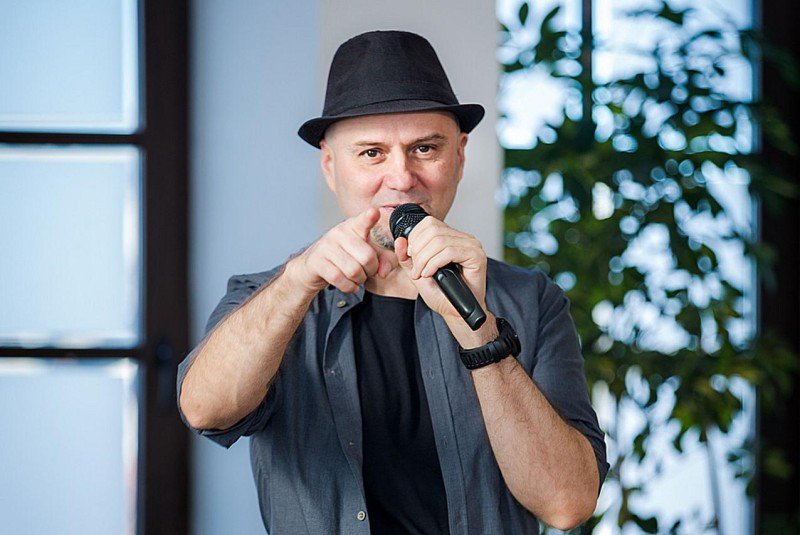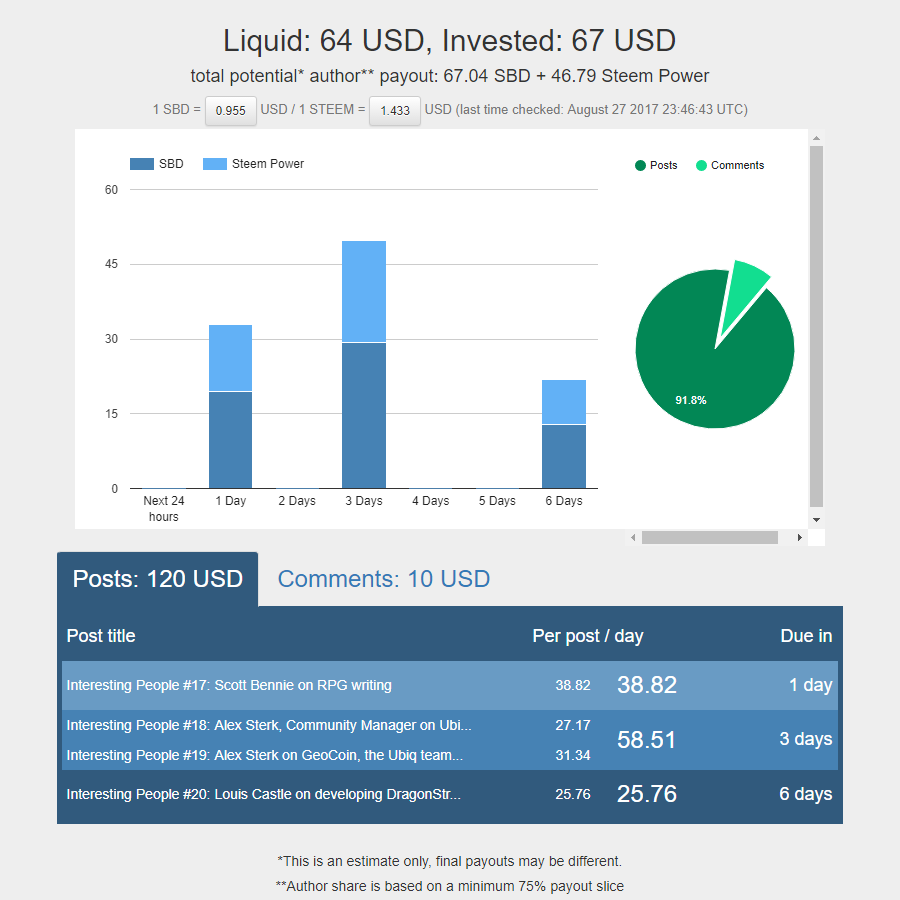I spoke to Steem witness @dragosroua about his early days in tech entrepreneurship through to becoming a Steemit witness, and some of the bumps along the road getting there.

Hi, Dragos. Cool to meet you, and thanks a lot for agreeing to do this. So to kick it off, please tell me a bit about your early background and how you got involved in the crypto space through to Steemit.
Dragos: Hi. Sure – so if you look at my profile, one of the things it says is “storyteller”. It’s rarely straight A-B, and is more convoluted, with ups and downs and like a good Hollywood movie has characters appearing out of the background! Well, I started pretty late, when I was 29. I did my first online publishing company which was big in the 2000s. Before that, just like you I was a journalist, only in radio. I was an anchorman, but this career didn’t fulfil me.
So the company I started in 1999 became quite successful and in 2008 when I did my exit, I got a bit of money and decided to change my lifestyle. I didn’t want to be this big entrepreneur with a lot of people under me and become a prisoner of my own company – so I started to become a digital nomad. Part of that plan was to set up a business as remotely as I could in order to stretch myself. The business didn’t work out – it was an iPhone apps business that was registered in New Zealand and I was working remotely from everywhere, but mostly from Romania.
I travelled a lot – I travelled through Japan, Thailand, Hong Kong, and the US a couple of times. While I was going through all those countries I spent a lot of time in coffee shops and discovered the Starbucks culture which was rising at that time. When I was back in Romania I started to do a bunch of meet-ups where friends could get together and pitch ideas and comment on them. Those meetings were called Open Connect and became quite popular, to my surprise. I started the first one 2012, and by 2014 the community has about 5,000 people.
And this was all in Romania?
Dragos: All in Romania, yeah. It was replicated in other cities, and a couple angel investors said, “you’ve got a community, so let’s build a space for them”. We built a space called Connect Hub in 2014, and in the pitch to investors there was also a line about wanting to do a currency for these people. I’d been into Bitcoin since around 2012 but there was always this barrier between myself and the codebase because it was in C and it was kind of immature at that time – it was difficult to get into because very few people understood what was going on and you needed multiple machines to test, and stuff like that. It’s much easier today.
So, I started the coworking space in 2014 and in 2016 it ended – it didn’t work out because it didn’t have enough funds. After that I got hired as a programmer. I have a day job as a full-stack coder but I write objective C, Java… whatever is needed for what I am doing on web and mobile.
In the meantime I started getting more involved in blockchain, in terms of writing code, getting involved with Steemit in October 2016 ,and started two of my own projects on the blockchain. They’re my own coins running on top of different blockchains. One of them is called RunCoin and the other is called HubCoin. Those are my pet projects on top of what I do as a witness on Steemit. As you can see, the blockchain was following me through my endeavours, but it was never a straight line!

Curious about when your next Steemit payments are due? Check out Dragos' app at http://steem.supply/
Anyway, when I was getting involved with Steemit I was doing these interviews for Wade Patterson called 20 questions. I was doing two or three per month and I said, OK, I will do that – but when he sent me the link and I saw that you could make money, I was hooked!
In November I started my campaign for witness, and that went up until April this year when there was a big flag war with whales and dolphins – I don’t know if you’re aware of that?
Well, I joined afterwards but I read about it and do find it interesting. It was one of the first things I saw rumblings of that made me worry a little bit about Steemit – in terms of governance, at least. It seemed like a schoolyard spat but with people who have a lot of power in this space.
Dragos: Yeah, so I was following this up to that moment when there was the so-called experiment where the whales got to flag apparently random people just to follow a certain line of revenue. They decided to flag people, literally taking money away from them, and this collided with my values. I decided to step out because as a witness I get to validate transactions, and I didn’t want to be part of this.
At the time there was also a little bit of conflict between the founders – Ned Scott and Dan Larimer. Now I want to say that I was an entrepreneur for 18 years, and I have had partners, and this is not something unique to the Steemit founders… this is something that happens. It’s just human nature… sometimes you have different opinions but for the good of the platform or the good of the service, you have to come to a resolution, whatever that is, as fast as possible in order to avoid a bigger crash. For a few weeks there was quite a bit of public exposure over their conflict, and at one point Dan decided to quit to start EOS. This was also around the time that the experiment was coming to an end.
When you say "experiment" can you just go into a little more detail about that please?
Dragos: Sure. The whale no voting experiment. It was started by three witnesses who said, “OK we are going to refrain from voting because we want to see how the platform will perform if no whales were voting”. There was always that concern that people were draining the reward pool via alliances with the whales, and some whales were thus driving revenue away.
So, OK, no whales were voting. I thought OK, maybe this is something good, and initially I even supported the experiment. However, they were also downvoting every whale vote. So if a whale was voting, say even on one of your posts, they’d be taking the money away from you. They were trying to level up the game in a very brutal way without having any methodology. They had no metrics to measure whether the experiment was going to be a success or not.
After Dan left and the experiment ended and those witnesses kind of stepped back, Steemit became a liveable space again, so I came back, reinstated my witness and started my activities again. In the process, though, I lost the goodwill of some of the voters who initially voted me as a witness. Some of the witness, including Ned, the cofounder, stepped back and had this approach of, “well, you weren’t here when we had the bad times, so we’re not going to support you right now”.
I’m not sure if you’re aware of that red/teal organization diagram?
No, I don’t think so. What’s that?
Dragos: There’s a very interesting book which describes the structures of organizations starting at red, which is pretty much mobsters and mafia where loyalty is valued above everything else. There are still these organizations, especially in incumbent societies. When you first go into a new space, you learn that loyalty is fundamental.
Then you evolve into something more interesting, like a government, which is orange, or even into a teal organization, where we’re talking about a collective consciousness – something like that. Steemit right now is at the red point, where alliances are formed between people who have enough power, and they are working towards preserving the status quo as much as possible.
I’m not upset about that – this is just something that is.
OK – so are you financially motivated to being involved in Steemit, or do you also have ideological motivation?
Dragos: Yes, I’m motivated financially because I truly like blockchain projects because it is a consensus-based emission, as in minting, of currency. So in this case, you are minting by blogging, and it is one of the least expensive ways to do so. Also, it is quite environmentally friendly if you want.
Because it’s not churning out hash power mining with electricity-hungry graphics cards, you mean?
Dragos: Yes, exactly! (laughs)
Steemit’s one of the interesting ones, but there are many others. I’ve become involved in a few more projects and I know of some currencies that are well below 500 or 600 ranking on Coinmarketcap, but they are amazingly good in terms of technological advance.
So, yes I am financially motivated because I think it’s a good investment. Steemit is not going to be the only social media platform based on the blockchain, but being the first one and looking at the financial model, looking at the corrections that it got – I don’t know if you know, but the inflation was way higher and the power down period was like two years – those corrections are telling me that there’s a team behind the project taking feedback and steering it towards a direction that will create consensus. Ideologically, that’s a very complex discussion!
I’m sure it is – maybe we need another interview for that one!
Dragos: Yeah! (laughs)
OK cool, well I’m going to wrap this up here then, and we can move to the next topic for my next post: some of the problems I see on Steemit, and what your take on them is.
Dragos: OK, great!
Thanks to Dragos Roua for taking the time to discuss all of this with me. We went on to a deeper dive into some more specific issues on Steemit, which is the subject of my next post. You can check out @dragosrou’s posts, vote for him as witness, and visit his website at http://dragosroua.com/.
Previous:
Interesting People #20: Louis Castle on developing DragonStrike and other D&D classics
Next:
Interesting People #22: Dragos Roua on the value of Steem, and what makes it different
